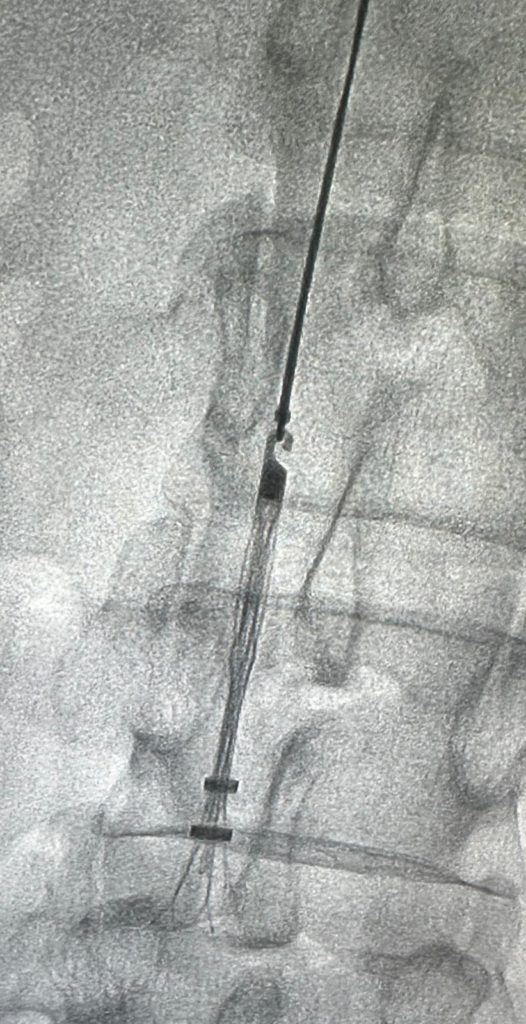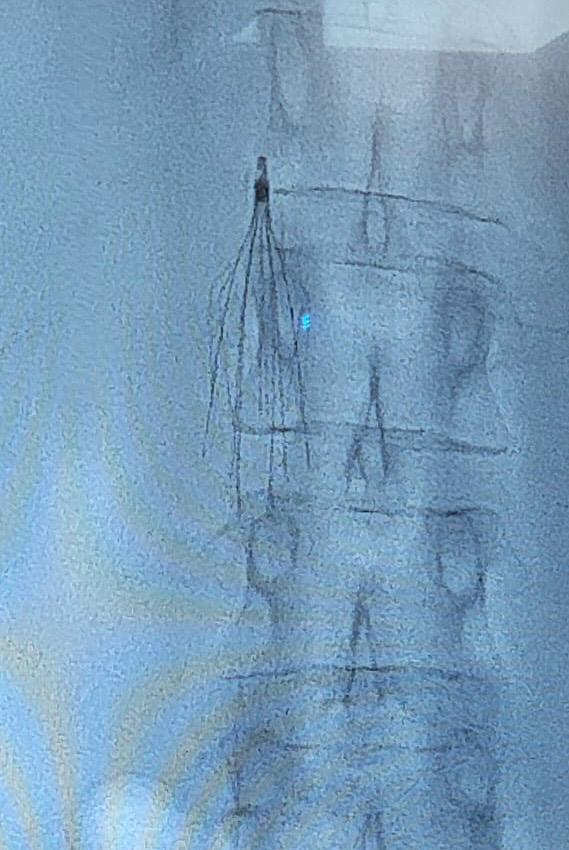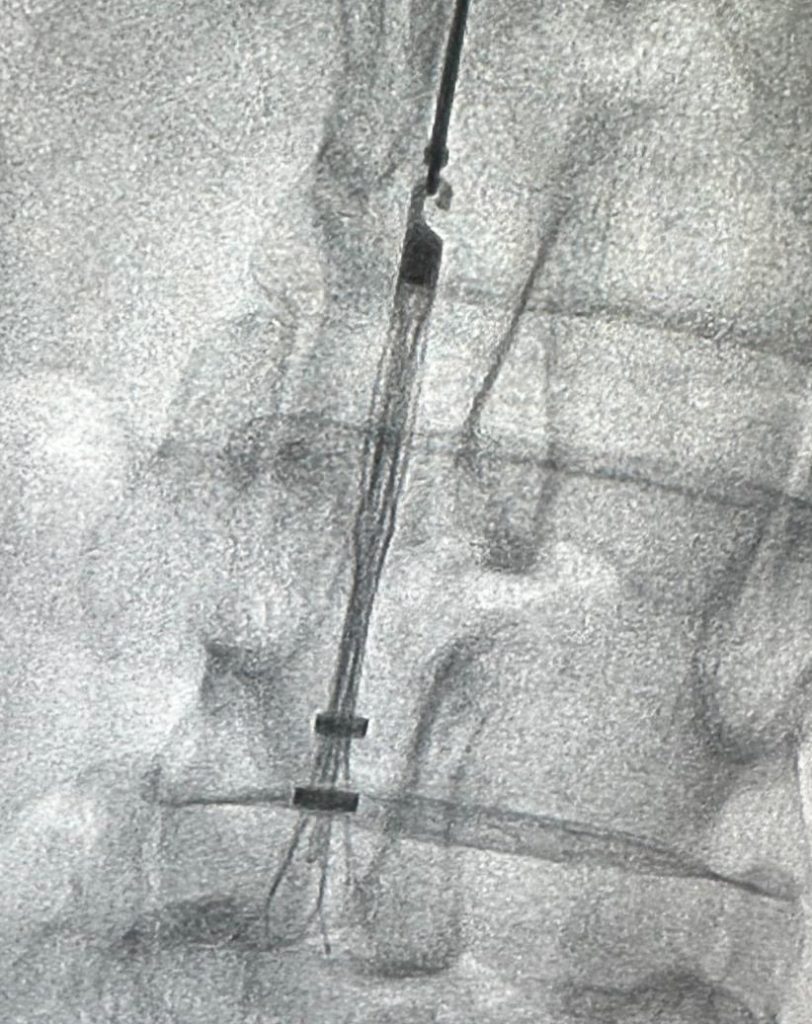An IVC filter, also known as an inferior vena cava filter, is a small medical device that is implanted in the inferior vena cava, which is the large vein that carries deoxygenated blood from the lower body back to the heart. The purpose of an IVC filter is to catch blood clots that may form in the legs before they can travel to the lungs and cause a potentially life-threatening condition called a pulmonary embolism. It is typically used in patients who are at a high risk of developing blood clots but are unable to take anticoagulant medications or have had complications with them.
When would an IVC filter placement be warranted?
Typical candidates for an IVC filter are individuals who are at a high risk of developing blood clots but cannot take anticoagulant medications or have had complications with them. Some common scenarios where an IVC filter may be considered include:
- Deep vein thrombosis (DVT): Individuals with a history of DVT or those who are at an increased risk of developing DVT, such as those with cancer or prior surgeries, may be candidates for an IVC filter.
- Pulmonary embolism (PE): Those who have already experienced a pulmonary embolism or have a high risk of developing one may be recommended for an IVC filter.
- Surgery or trauma patients: Patients who are undergoing major surgeries or have suffered traumatic injuries, especially those involving the lower extremities, may be considered for an IVC filter to prevent blood clots.
- Contraindications to anticoagulant therapy: Individuals who cannot tolerate or have contraindications to anticoagulant medications, such as bleeding disorders or recent surgeries, may be candidates for an IVC filter.
It’s important to note that the decision to implant an IVC filter is made on a case-by-case basis.
What are the risks associated with IVC filter insertion?
While IVC (inferior vena cava) filter insertion is generally considered safe, some potential risks and complications may arise. It’s essential to discuss these risks with your healthcare provider before undergoing the procedure. Some possible risks associated with IVC filter insertion include:


- Filter migration: There is a small risk that the IVC filter may move or migrate from its intended position. This could lead to the filter becoming ineffective or causing damage to nearby organs.
- Filter perforation: In rare cases, the IVC filter may puncture or perforate the vein or surrounding structures, such as the bowel or liver. This could result in bleeding or other complications.
- Filter fracture: There have been reports of IVC filters fracturing or breaking over time. If a filter breaks, the broken pieces could migrate to other parts of the body, causing damage or blocking blood flow.
- Infection: Like with any invasive procedure, there is a risk of infection at the site where the IVC filter is inserted. This can lead to localised symptoms or, in rare cases, systemic infection.
Blood clotting: Paradoxically, in some instances, the presence of an IVC filter may increase the risk of blood clot formation. This could potentially be due to the altered flow dynamics or other factors related to the device.
Retrieval complications: If a retrievable IVC filter is used, there is a risk of complications during the retrieval process, such as difficulty removing the filter or damage to the blood vessel during the procedure.
It’s important to note that the risks associated with IVC filter insertion vary depending on individual factors, such as a person’s overall health, the specific type of filter used, and the skills of the medical professional performing the procedure
Is an IVC filter a permanent fixture?
No, an IVC (inferior vena cava) filter is not necessarily permanent. There are two types of IVC filters: permanent and retrievable.
Permanent IVC filters are designed to remain in place for the long term. They are typically recommended for patients who have a high risk of blood clots and are unable to take blood-thinning medications. These filters are not meant to be removed unless there are complications or concerns.
On the other hand, retrievable IVC filters are designed to be temporarily placed in the vena cava to prevent blood clots and then removed once the risk of clotting has decreased. These filters are often used in situations where a person’s risk of blood clots is temporary, such as after surgery or trauma. The retrieval process is typically done in a minimally invasive procedure usually via the neck or groin and can be done in a day case under sedation and local anaesthetic.
It is important to note that retrievable IVC filters should ideally be removed as soon as the risk of blood clots has subsided, as there can be potential complications associated with leaving them in place for extended periods such as vein perforation, tilting and being embedded.










